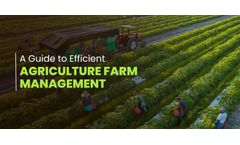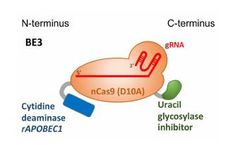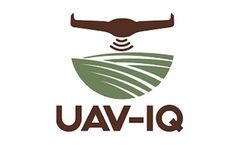Refine by
Integrated Pest Management Articles & Analysis
33 articles found
In California’s sun-soaked vineyards, where the wine and table grape industries are cornerstones of the state’s agricultural economy, powdery mildew remains a relentless adversary. Caused by the fungal pathogen Erysiphe necator, powdery mildew is one of the most pervasive and damaging diseases in viticulture, affecting both the yield and the market quality of grapes. Once ...
In the realm of insect pest management, the utilization of pheromones has proven to be a game-changer. ...
In an era where agriculture is essential for sustaining the global population, it’s crucial to examine the unseen threats that farming practices pose to aquatic ecosystems. While modern farming techniques have significantly boosted food production, they have inadvertently introduced risks that could undermine the very foundations of our aquatic environments. Farming, whether involving ...
As global agricultural practices address environmental and economic challenges, regenerative agriculture has stood out as a promising approach to creating more sustainable and robust farming systems. This farming method focuses on restoring soil health, enhancing biodiversity, and improving water cycles, ultimately leading to more sustainable food production. Innovative tools and technologies are ...
Agriculture has always been a fundamental part of human civilization, providing the food and resources necessary for survival. However, as the global population continues to rise and climate change presents new challenges, the need for efficient agriculture farm management has become increasingly critical. Implementing modern technologies and innovative practices can help optimize productivity, ...
This pest costs American farmers over $1 billion annually in damages and control measures. ...
Another advantage of insecticidal proteins is their potential for sustainable pest management. The use of chemical pesticides has led to the development of pesticide-resistant pests, which poses a significant challenge for pest control. ...
Everyone knows the environmental impact carbon emissions have on the environment, speeding up climate change and causing extreme weather conditions. However, fewer people are aware of the importance of using water conservatively, as resources are quickly diminishing across the world, which not only exacerbates climate change, but could also put human and animal life at ...
Hey there, fellow cannabis grower! Welcome to our detailed guide on a common issue many of us face: Why are your cannabis leaves curling up? If you’ve noticed those once luscious green leaves taking on a curious curl, don’t panic just yet! We’re here to help you understand what might be causing this problem. We will guide you through the process of diagnosing and addressing it. ...
Insect pheromones have been widely used in pest management internationally in recent years as they are green and environmentally friendly, making fruit and vegetable safer. ...
While augmentative releases of beneficial insects and mites are becoming increasingly popular in vineyards, it is still rare to find a grower in California with over a decade’s worth of experience using augmentative biological control. David Gates is the senior vice president of vineyard operations at Ridge Vineyards, a winery with a facility in Sonoma County and another one in the Santa ...
In addition, the reformed CAP introduces eco-schemes, a new voluntary instrument that will reward farmers for implementing climate and environmentally-friendly practices (organic farming, agroecology, integrated pest management, etc.) as well as animal welfare improvements. ...
Managing Production Risk Through Crop Insurance Facilitator: Devinn Lambert, Bioenergy Technologies Office, DOE kicked off this Session Spotlight on algae farming of the Algae Biomass Summit. Devinn works in the Advanced Algal Systems Program and is Co-Chair on the inter-agency working group on algae. This is one of the driving forces how Devinn and the Algae Biomass Organization have come ...
Chris is working in conventional production, but he’s been using a lot of practices usually associated with organic farming such as the use of cover crops to help build and protect the soil, the release of beneficial insects and implementation of integrated pest management as the primary tool for controlling insect pests. ...
Insect phenology models are invaluable in the Integrated Pest Management (IPM) toolbox. They help consultants and growers predict key events in a pest’s life cycle, and enables them to target sprays for maximum impact. ...
During our conversation, Greg shared his view on the importance of the vineyard crew’s role in an Integrated Pest Management (IPM) program, on the underestimation of their ability to incorporate new technologies, and addressed misconceptions about the cost of transitioning to organic. ...
Ancient civilizations used ashes, sulfur and salts to keep pests at bay. Since then, in the race to fend off fungal diseases like tomato blight and insects like the potato beetle, pesticides have gotten stronger. ...
ByEnsia
Edible Horticulture Research Priorities by Crop Group All Crops Developing integrated pest management strategies for horticultural production systems that incorporate pesticides, alternative control measures, host resistance and/or take a systems approach to controlling pests, disease and weeds. ...
Once derided as snake oil, today’s products have proven benefits in suppressing pest organisms. Whether they activate plant defenses, parasitize or inhibit pathogen growth or make the environment less favourable to disease, they can play an integral role in crop protection. ...
Researchers at the University of Essex in the United Kingdom measured pesticide use and crop yield at 85 project sites in 24 Asian and African countries practicing integrated pest management — an agronomic approach that taps nature’s strategies, such as competition, diversification and predation, to reduce the toll of insects, weeds ...
ByEnsia














